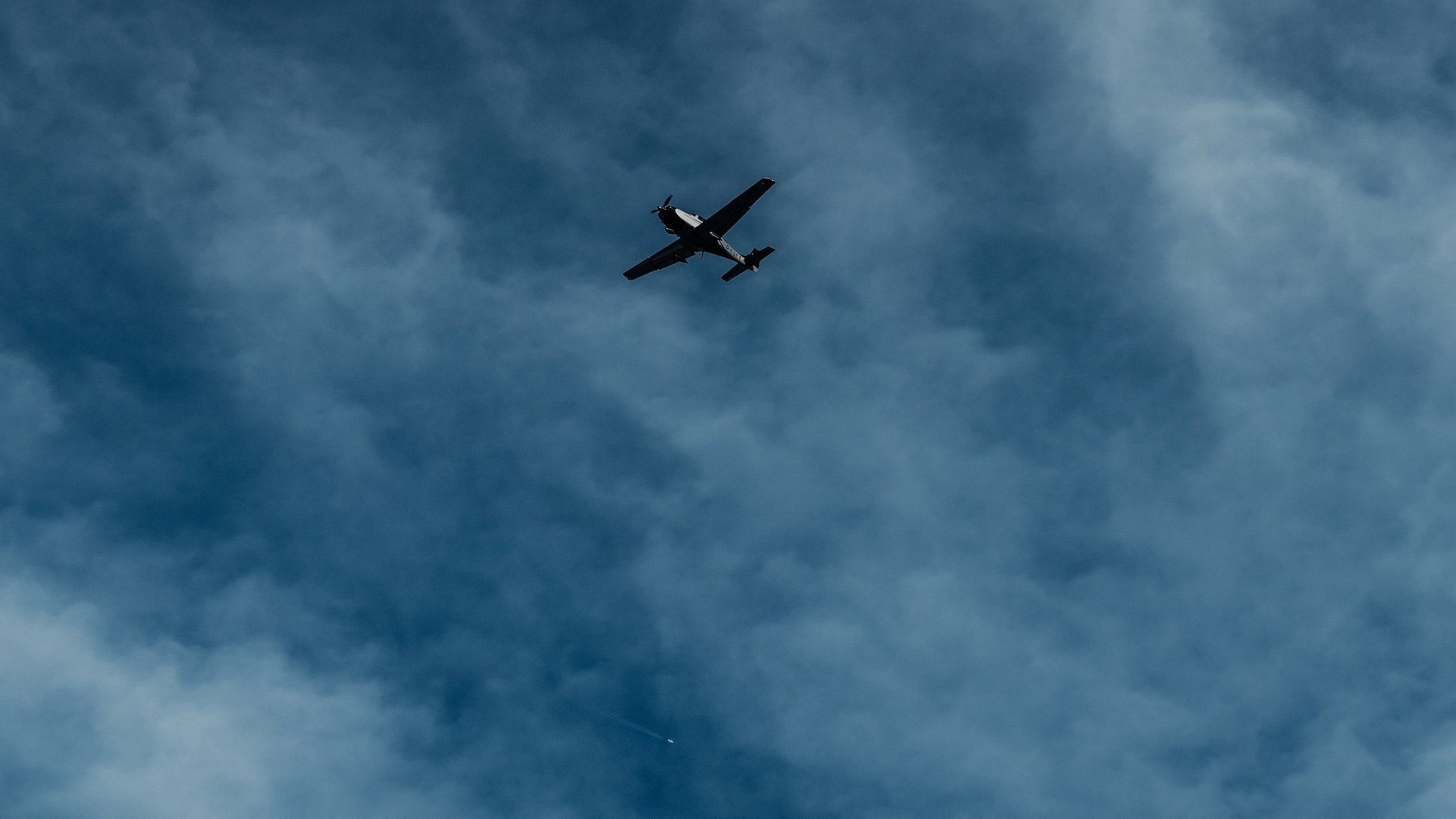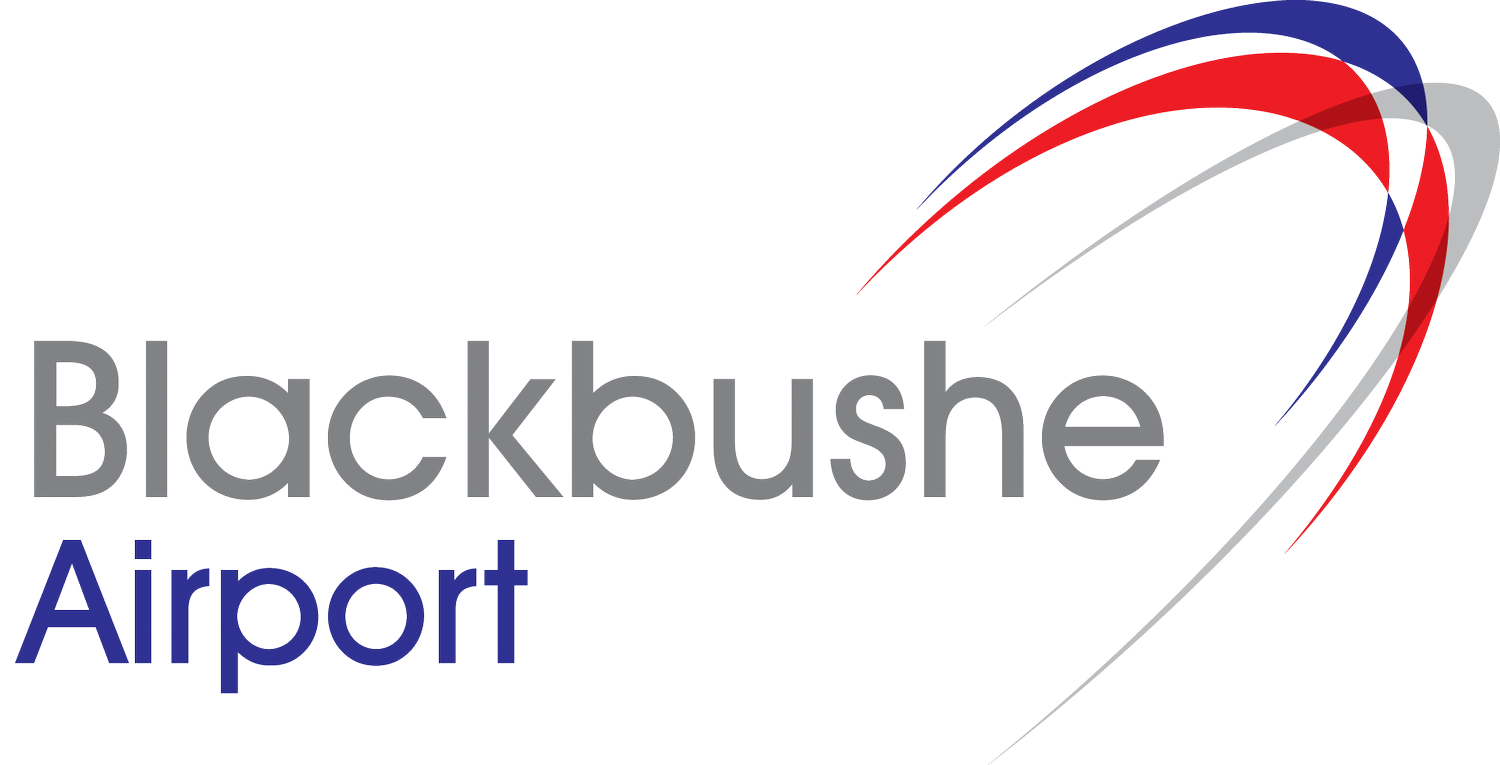
NOISE & IMPACT
Minimising Our Impact on our Neighbours
Blackbushe Airport is committed to reducing the impact of noise from aircraft operating through our airport on our neighbours.
In which areas can Blackbushe influence flight paths?
Blackbushe operates a Flight Information service. This is not air traffic control, we cannot give instructions to aircraft in the air. However, within the Blackbushe Air Traffic Zone (ATZ) we have developed a set of rules and procedures that allow aircraft to arrive and depart whilst avoiding noise sensitive areas.
The Blackbushe Air Traffic Zone (ATZ) is a 2 nautical mile radius around the centre of the aerodrome. Where it would overlap with Farnborough’s ATZ, the boundary is drawn along the M3 as a clear visual reference.
Within the Blackbushe ATZ, aircraft must conform with aerodrome procedures. Our Flight Information Service Officers are not Air Traffic Controllers, and cannot issue instructions to aircraft. However, they will pass information, and advise aircraft if they may be in a position to cause a noise nuisance.
Noise Abatement Areas
Blackbushe Airport has a long-term Section 52 Agreement regarding noise abatement dating back as far as 1980. The most recent agreement was updated in 1985 and prevails today. The map below shows the noise abatement areas where direct overflight is prohibited for all aircraft departing or landing at Blackbushe except in an emergency.
It must be noted however that aircraft flying close to these areas may cause noise to those within them, without directly overflying them. This is the case for the Tudor Drive area which is directly adjacent to the approach and climbout to the east of the airport.
Sometimes it may be necessary for aircraft to overfly these areas in situations such as:
If the aircraft declares an emergency or other problem
If taking avoiding action, or any other manoeuvre in the interests of safety
When conducting an air display and in accordance with CAA rules, and event planning restrictions
The noise abatement map was prepared in the 1980s and so many newer areas of housing are not included within it. Generally our pilots will try to avoid overflying built up areas, but if not included in the agreed noise abatement areas, they are under no obligation to do so.
This map is a close reproduction of the 1985 Noise Abatement Map known as ‘Plan D’. It is not exact, but provides a good reference over modern day mapping. It can be interacted with on Google Maps.
outside the blackbushe atz
Blackbushe is currently surrounded by various complex areas of airspace. To our East and above us, is the London Terminal Maneuvering Area, which surrounds Heathrow. To our South is the Farnborough CTR and several CTAs, and to our west, the RAF Odiham Military Air Traffic Zone (MATZ).
Most of our general aviation traffic, especially from light aircraft, will depart and arrive from the North-West. This is an area of “Class G” airspace. This is a designation of airspace that is open to all aircraft, of all types. Aircraft do not need to be in communication via radio, and are entitled to fly wherever they like, as long as they observe safety rules contained in the Air Navigation Order (ANO). The ANO requires aircraft to be at least 500ft from any building, structure or person. An aircraft can descend lower than 500ft over open fields for example.
Generally, it is unusual for an aircraft to be operating below 1,000ft, but an important part of flight training is a Practice Forced Landing (PFL). This is an exercise where an instructor will simulate an engine failure and teach a student how to select and position for an unplanned landing. During these maneuvers, aircraft may be lower, and some noise is generated by the climb away. This is a controlled maneuver under the supervision of an instructor, and there is no additional safety risk associated with it. It is performed in accordance with the Air Navigation Order and Rules of the Air.
If an aircraft can be identified as originating from Blackbushe, we can remind pilots to avoid noise sensitive areas, however there is no action either Blackbushe or the Civil Aviation Authority can take against pilots unless they can be proven to have contravened the Air Navigation Order.
AEROBATICS
Blackbushe currently has 3 aircraft capable of aerobatic flights. One of these is privately owned and operates such flights very infrequently, whilst the other two are operated by a resident school. The school typically operates aerobatic experience flights once every month or two, and on these days makes sure to move the flights around the wider airport area to avoid repetitive noise over the same place. We often receive complaints of aerobatic flights not involving Blackbushe Aircraft. There are aircraft which operate from other aerodromes such as Popham or White Waltham who use the area between Basingstoke and Reading on a regular basis, and complaints usually relate to those aircraft.

EXECUTIVE TRAFFIC
Our executive traffic, light jets or turbo-prop aircraft will usually be flying at higher altitudes in controlled airspace,. As they approach Blackbushe they are routed by several NATS ATC units, with the final one being Farnborough.
The route they follow will be determined by the runway in use. Aircraft land into wind, so the prevailing wind on the day dictates the runway used. Blackbushe also coordinates runway direction with Farnborough.
If runway 25 is in use, aircraft will be routed to the south and east of Farnborough, before being turned onto final over Camberley for a 3-4 mile final approach.
If runway 07 is in use, aircraft will be positioned over Hook, turning onto a 3-4 mile final and passing north of Hartley Wintney.
These routes are largely prescribed by NATS and we have little influence on them.
This is a copy of our published circuit for Blackbushe which shows noise abatement areas in more general terms to make the information easily digestible for pilots.
complaining to the civil aviation authority (caa)
Aircraft noise is not currently a statutory nuisance in the UK. It is not covered by the Environmental Protection Act 1990 or the Noise Act 1996. This means that local authorities do not have the legal power to take action on matters of aircraft noise, and nor does the CAA have the legal power to prevent aircraft flying over a particular location or at a particular time for environmental reasons. Read more on the CAA Website.
COMPLAINTS ABOUT LOW FLYING
In general, unless they are landing or taking off, an aircraft should be 1,000 ft over a built up area or otherwise 500ft from people, buildings etc. It’s extremely difficult to judge aircraft height above the ground and distance from objects but if you have evidence of the height/distance, such as photographs, the CAA can investigate (see note). To enable the CAA to trace the aircraft concerned you would ideally have its registration. For UK aircraft this is normally G- followed by four letters and is on the side and wing of the aircraft.
Note: When using FlightRadar24 as a position source, it should be noted that, as the FlightRadar24 website explains, the altitude displayed is not necessarily indicative of an aircraft's height above ground. FlightRadar24 is therefore not considered to be a reliable source of evidence of an aircraft's position.
Read more on the CAA Website.
REPORT A COMPLAINT
Please review the information on this page before submitting a noise complaint, as your question may have been answered. If you are unsure, or believe the aircraft may have come from Blackbushe, please log this using our form below, and we will attempt to identify the aircraft and reply with information. Every Noise Complaint will get a response from our team.
HELICOPTERS IN THE MIDDLE OF THE NIGHT?
Blackbushe is closed 2200-0700. Most helicopter noise in the middle of the night is caused by the National Police Air Service (NPAS) when they respond to an incident. Please don’t complain to us about these - there’s nothing we can do about them - and nor would we wish to!
